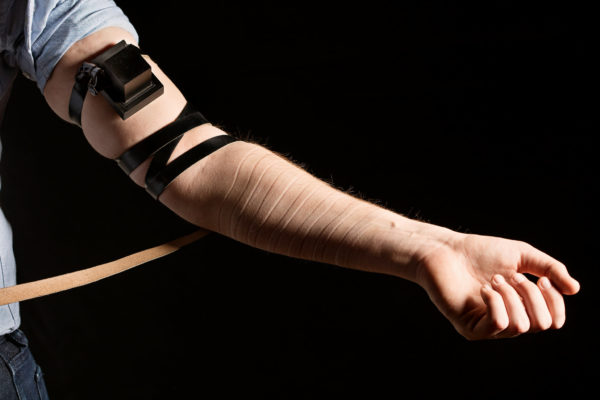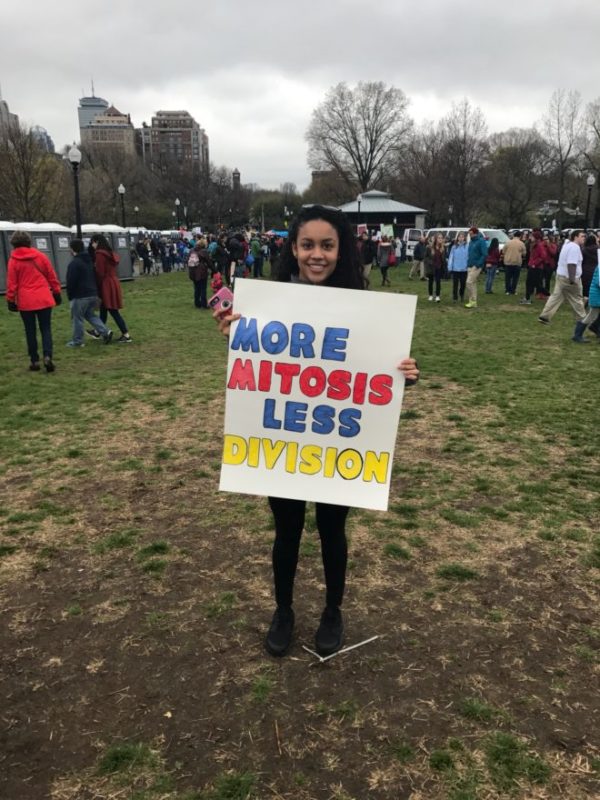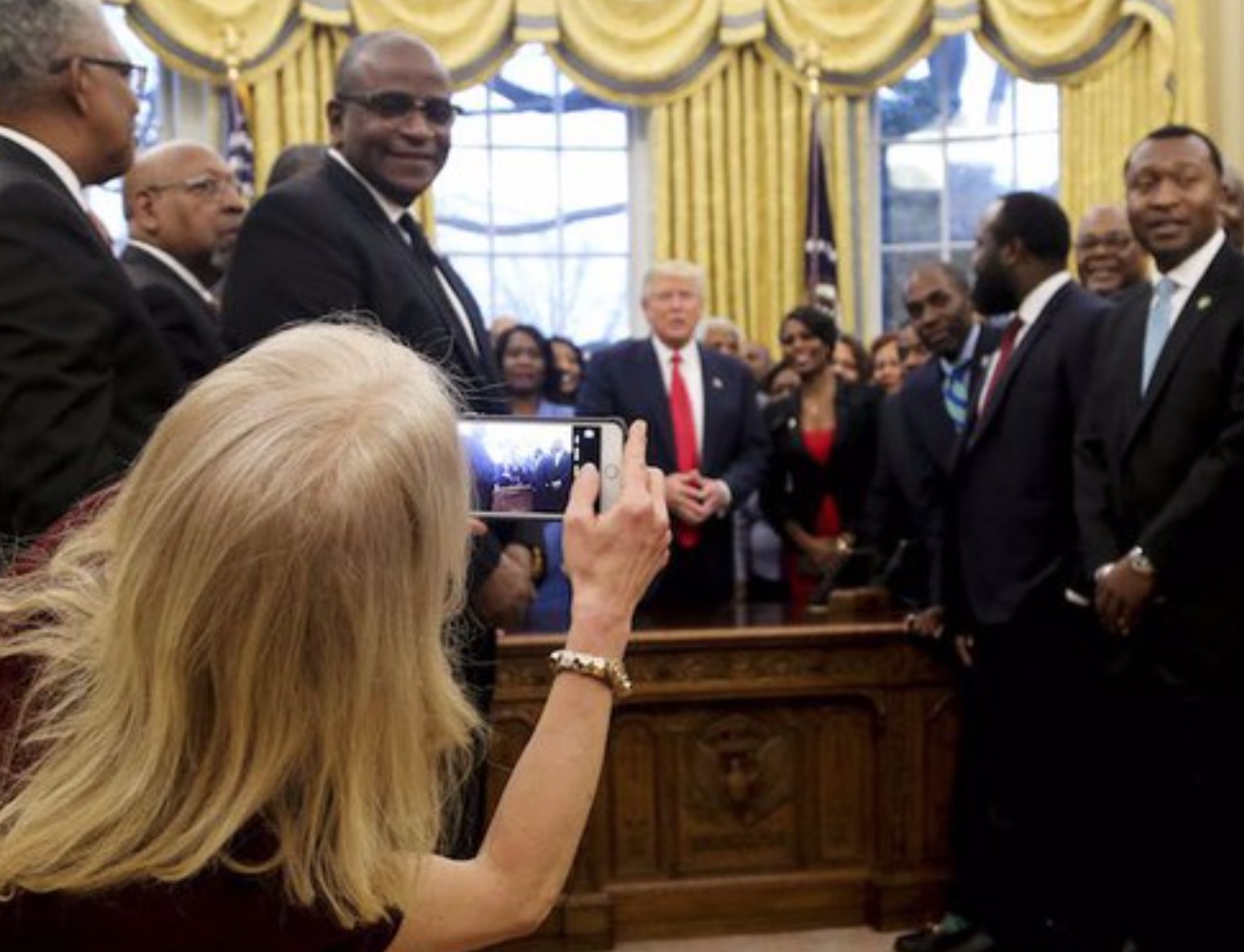Notes
On That Stunning Tefillin Photo and the Marks that Remain

Very little of what touches our skin leaves a mark; even less leaves a permanently visible trace. But when something does imprint perceptibly (because the contact is forceful, prolonged, or hot enough), the skin records it indexically, like a photograph. The record is direct, and faithful: the cut as wide as the sheet of paper is thick, the bruise at the exact point of contact with the unforgiving object, the burn in the shape of the hot liquid as it splashed. Our skin is also the conduit by which we encounter most of life’s sensory pleasures, but these almost never leave a physical record like the insults do. The most enduring alterations of the skin—scars, piercings, tattoos—are often accompanied by clear memories of their origins; if the skin can function like a photograph, these memories are its negative. But of course, skin cannot tell every story; after a traumatic event, the cells might knit and repair and forget long before the person inside it does. Skin is an unreliable witness.
The spiraled relief on this man’s forearm is an artifact of the leather strap that had, until moments before the picture was taken, secured his tefillin in place. A devotional object traditionally worn by Orthodox Jewish men during their morning prayers, the tefillin is a small box containing scrolls of parchment printed with Torah verses. They usually come in pairs, one for the non-dominant arm and one for the forehead. This photo illustrates a New York Times Magazine story about Footsteps, a non-profit organization that helps young people who were raised ultra-Orthodox navigate the process of leaving their religious upbringing behind, and so reckoning with what the article describes as the “high price” of such a departure. The subject of this photo, like all the Footsteps members quoted in the article, is largely anonymous. The camera focuses tightly on his forearm; the rolled-up cuff of his pale blue shirt and the waistband of his dark jeans are peripheral. Even his right hand is cut out of the frame, as if some unseen force is extricating him from the tefillin. We see his skin in detail: bumps, creases, tiny hairs catching the light, veins, fortune-telling lines on his palm, tendons, pink fingertips with close-trimmed nails. The regularity of the spacing between the loops on his arm suggests practice and precision, a long biography of observance.
With its emphasis on the suffering of these young people (filtered through the lens of the author’s own departure from an Orthodox upbringing), the article speaks readily to a secular readership; they respond, in turn, with praise and expressions of solidarity in the comments section. The lack of context for the image (the tefillin is not mentioned again in the article, and one commenter asked for clarification about what the photo was depicting) opens a space for spectators to ascribe their own meaning. For viewers inclined to be skeptical of organized religion, the visual echo of the black leather and the black void behind the subject affirms the unenlightened darkness of fundamentalism. The position of his arm also replicates the iconography of injection drug use: the hand loosely curled, the elbow bent, the improvised tourniquet. Opiate of the masses.
The faithful wear the tefillin on the body as a sign of submission to divine authority and a symbol of fortification by it, a reminder that the body and mind would go wayward without religious guidance. Here, however, it signifies constraint and deformation. In some ways, the perfect replication of the leather’s circuitous path in this deeply tactile image hints at the abiding, and ostensibly damaging, influence of ultra-Orthodox upbringing on the article’s subjects. Many of these young people find themselves ill-prepared for life outside the enclaves in which they were raised, whether because they are undereducated or simply unfamiliar with the routines of the larger world. In the photo, these difficulties are suggested visually by the bite of the strap into the softer flesh on the inside of his bicep. The box remains in contact with his skin, hinting that the core of his identity has not yet been dislodged. Indeed, many of the people interviewed remain conflicted about their decisions, a crisis narrativized through the story of a young woman’s suicide.
But skin, unlike a photograph, can be forgetful, and these physical traces are ephemeral. The Torah verses contained inside the tefillin emphasize God’s abiding protection and redemptive power, manifested in an eternal relationship that has already spanned thousands of years. Skin operates on a much shorter, mortal calendar. Were we to look again just a few minutes later, we’d likely see nothing but a naked forearm, the skin having returned involuntarily to its natural condition. Yet the photograph suggests no such transformation. Instead, it leaves him suspended purgatorially between worlds, insisting that certain covenants can never be unmade.
— Rebecca Adelman
(photo: Elinor Carucci for The New York Times. caption: A Footsteps member removes his tefillin, a ritual object worn during prayers.)


Reactions
Comments Powered by Disqus